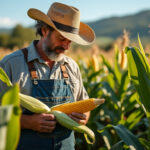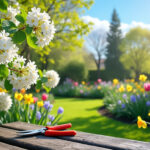In the realm of landscape design, the delicate balance between aesthetics and functionality is paramount. As urban areas expand and environments face ecological challenges, the need for sustainable and beautiful outdoor spaces has never been more vital. This article explores key principles and lessons drawn from historical figures like Roberto Burle Marx, which serve as a guide for contemporary landscape architects striving for creative solutions that benefit both nature and communities.
- Historical perspectives on landscape design
- The influence of Roberto Burle Marx
- Principles of sustainable design
- Integrating culture and ecology in landscapes
- The importance of adaptability and multifunctionality
The historical perspective: Lessons from the past
Roberto Burle Marx, a luminary in the field of landscape architecture, revolutionized how we perceive the integration of natural elements in urban settings. From the 1930s until the 1990s, his innovative methods highlighted the importance of utilizing native plants and creating sustainable ecosystems that require minimal human intervention. This early recognition of the interplay between design and ecology not only influenced his contemporaries but continues to inspire modern landscape architects in 2025.
Burle Marx’s impact on contemporary design
With a focus on creating vibrant spaces, Burle Marx transformed neglected areas into flourishing ecosystems. His approach to landscape design showcases how we can enhance city living through aesthetic beauty while fostering ecological balance. As cities today face unprecedented challenges such as urbanization and climate change, revisiting Burle Marx’s principles offers valuable lessons on establishing balanced landscapes.
Embracing sustainable design principles
Creating aesthetic landscapes goes hand in hand with sustainable practices. Burle Marx’s methods emphasized ecological integrity by prioritizing native plants that thrive in their natural climate. This approach not only reduces water usage and maintenance costs but also supports local biodiversity, creating habitats that encourage wildlife to flourish.
Designing for functionality and community
Modern landscape architects increasingly recognize the significance of functionality in garden design. Promoting recreational spaces, community interaction, and cultural identity plays a crucial role in how landscapes serve urban populations. Parks like Parque do Flamengo in Rio de Janeiro demonstrate how thoughtful design can lead to multifunctional spaces that cater to the needs of local residents while preserving their ecological identity.
| Design Element | Impact |
|---|---|
| Native Plants | Supports biodiversity, reduces water use |
| Recreational Spaces | Encourages community engagement and wellbeing |
| Aesthetic Features | Enhances urban identity and cultural appreciation |
Integrating art and ecology
The intersection of art and ecology is a defining characteristic of Burle Marx’s work. His designs not only prioritize environmental sustainability but also incorporate artistic elements that resonate emotionally with users. The rooftop garden at the Ministry of Education and Health building in Rio exemplifies how landscapes can serve as canvases, blending form and function in ways that heighten the urban experience.
Creating harmonious outdoor spaces
By viewing landscapes as living works of art, designers can utilize Nature’s Palette to create unique and compelling outdoor spaces. These outdoor areas not only provide aesthetic pleasure but also contribute to ecological resilience. The ingenuity in Burle Marx’s designs encourages today’s landscape architects to look beyond the visible landscape and consider the intricate relationships between the environment and its inhabitants.
The importance of adaptability in design
One of the critical lessons within landscape architecture is the need for adaptability. The landscapes we create must evolve in order to meet the changing needs of communities and environments. Burle Marx’s gardens exemplify this philosophy, showcasing designs that respond dynamically to both ecological and social shifts.
Designing for future challenges
The rapid pace of environmental change introduces numerous challenges for urban planners and landscape designers. By embracing principles of adaptable design, such as incorporating multifunctional elements and native species, we can address contemporary issues while promoting sustainability. These strategies foster resilience, ensuring that outdoor spaces remain both functional and beautiful over time.
| Adaptable Design Features | Benefits |
|---|---|
| Multifunctional Spaces | Meet various community needs |
| Native Flora | Require less maintenance and promote local ecology |
| Flexible Layouts | Adapt to changing land use and climate |
What is soft landscaping and why it matters for your garden?
Frequently Asked Questions
What are the key elements of sustainable landscape design?
Key elements include using native plants, creating multifunctional spaces, and integrating aesthetic features that support both ecology and community needs.
How can landscape design contribute to biodiversity?
By prioritizing local plant species and creating habitats, landscape design can promote biodiversity and ecological balance within urban areas.
Why is adaptability important in landscape architecture?
Adaptability ensures that landscapes can evolve to meet changing community needs and environmental conditions, promoting long-term sustainability.
How does art enhance landscape design?
Integrating art into landscape design creates emotional connections, enhances beauty, and encourages greater appreciation for the natural world.
What role do native plants play in sustainable design?
Native plants are essential for creating self-sustaining ecosystems, as they require less water and maintenance while providing habitat for local wildlife.















